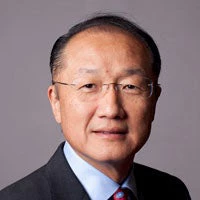
History is full of social movements that have succeeded and failed. The lessons from one ongoing movement that I know well – the fight against AIDS – should be examined closely by those looking to build movements today.
Lesson No. 1 from the AIDS movement is to believe only in the possibility -- not the inevitability -- of success. Opponents will fight and appear immovable. As those of us who lived through the early days of the AIDS fight, it was always far from certain that we would reach our goals.
For instance, we spent years fighting for treatment for poor people. Even though we possessed life-saving drug treatments in the mid-1990s, they were available only to people with good insurance or money to pay for the drugs. For everyone else, AIDS was still effectively a death sentence.
When we advocated bringing those treatments to the poor, we were told it was too expensive, too difficult, and offered slim prospects for success. In fact, some of the most important leaders in public health angrily opposed and ridiculed our efforts, and talked about focusing on the next generation through an emphasis on prevention.
Thankfully, many others saw the suffering and were compelled to act -- or ACT UP, which was the name of one of the leading AIDS activist groups. As a result, millions were treated, millions of lives were spared, and incalculable human and economic costs were avoided.
Lesson No. 2 is that activists have to be organized and methodical.
AIDS drugs were developed in part because activists attacked every link of the value chain for drugs and treatment, pushing for more funding, research, drug development, and trials. They started with nothing, and in an astonishingly short period of time, scientists had developed drugs that treated the disease. Today, scientists have developed more than 30 FDA approved drugs to treat AIDS.
When I was a young medical student in the early 1980s, people infected with HIV survived just 28 weeks. Today, because of those medical advances, a young person with HIV is projected to live an estimated 50 additional years.
Health workers and activists also pushed health ministries around the world to integrate AIDS treatment into their national health care systems. They collected and shared widely all the evidence on the best methods to treat and prevent the illness.
Those health workers and activists employed an unforgiving focus on evidence-based results. That doggedness has given us durable successes, saved many lives, and given us hope that we will end the AIDS epidemic and unlock the potential of millions still caught in its grip.
These lessons need to be remembered as we build the next generation of movements to end poverty, fight climate change and reduce inequality. Social movements face daunting obstacles; some will say the goals are impossible. But if today’s architects of budding movements identify each obstacle, develop detailed plans to overcome them, and articulate compelling reasons to reach those lofty goals, the movements can succeed and change the world.
This post first appeared in LinkedIn Influencers. It was adapted from a speech delivered in Thailand by Kim on the occasion of receiving the Prince Mahidol award for his past contributions in fighting AIDS. Three others also received the award: Dr. Peter Piot in the field of public health, and Dr. David Ho and Dr. Anthony Fauci in the field of medicine.
(Photo Credit: Cocoabiscuit / Flickr)


Join the Conversation